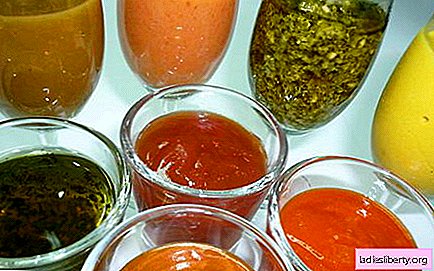
Hygiene rules are a generally accepted norm, but not all of them comply with them, so the issue of cleanliness of the toilet remains relevant.
Moreover, as you know, the toilet is the face of the hostess.
The methods and tools used for this task will depend on the condition, duration of use and the degree of contamination of the toilet.
The most common problem here is the appearance of urinary stone.
You can get rid of it using different methods, but first you need to find out the main reasons for its appearance.
How to clean the toilet from plaque and urinary stone: causes
The first and main reason for the occurrence of urinary stone is the presence of calcareous deposits. They appear wherever water is taken from an artesian well or river water intake, that is, almost everywhere. With constant use of the toilet, urine is only a concomitant factor in the process of "building up" the stone.
If you encounter such a problem, it is not at all necessary that you do not comply with generally accepted sanitation standards, because urine stone and limescale can appear at any time, even if you constantly maintain your toilet bowl in sterility.
What is the matter? The reason is that the appearance of stone and plaque on the walls of the toilet bowl is directly related to the daily use of plumbing. Naturally, both of these problems do not arise immediately, they may appear in a few months or even years, and begin to cover the walls, rim and drain hole of your toilet bowl.
The occurrence of urinary stone is most often associated with improper use of the toilet bowl, its appearance is often affected by untimely discharge or very rare cleaning. It's no secret that a certain mineral composition is present in human urine. Therefore, do not forget that when you do not use the drain on time, these minerals can appear on the walls and other elements of your sanitary ware. Thus, with each non-use of the drain, the coating will increase, and after some time it will not work to remove it with an ordinary brush.
The same can be said about limescale, but it only arises for a completely different reason. The cause of plaque is primarily the chemical composition and hardness of the water used to drain. To prevent the occurrence of limescale is much easier than urinary stone, all that is needed is to use emollients for water. As for the stone, it is impossible to prevent it, but it can be eliminated only through timely frequent cleanings.
Therefore, be sure to make it a habit to flush the toilet regularly after using it. In this case, urine will not stagnate in the toilet, respectively, and plaque in it will accumulate much less often. The flushing problem is relevant, as a rule, in families where there are small children. Also note that a damaged toilet surface can also affect plaque and urinary calculus. All kinds of microcracks that appear on the inner walls of your sanitary ware, improper use or pouring hot liquids into the drain can provoke an accelerated appearance of limescale.
How to clean the toilet from plaque and urinary stone using folk remedies
How to get rid of this always topical problem? There are many methods to get rid of plaque and stone, and you need to use them depending on the degree of contamination and the age of your toilet. If the toilet is still relatively “young” and not too dirty, you can try to clean it with folk remedies.
Dry oxalic acid
It is used, as a rule, in the chemical industry for priming surfaces before applying enamel. If there is a small amount of plaque and stone formed on your toilet, even a little of this substance will be enough to eliminate them. To do this, apply acid to a moistened rag (after putting on gloves), and wipe the contaminated area or dissolve a sufficient amount of the substance directly in the toilet. After use, the acid must be washed off and the surface cleaned with a brush.
Electrolyte (battery)
This is also acid. The principle of its operation is simple: apply to the surface, wait 15-20 minutes, then rinse off. If the surface does not immediately clean, repeat the procedure.
Vinegar essence
Before using this method, you need to pre-drain the surface of the toilet. The smell of vinegar is not the most pleasant, so try not to inhale its vapor.
Citric acid in soda
This "recipe" arose not too long ago, but has already gained some popularity. Take 1-2 bottles of Coca-Cola or Sprite soda and pour it into the toilet. The fact is that these drinks contain a significant amount of citric acid, which is enough to quickly corrode deposits.
How to clean the toilet from plaque and urinary stone using household chemicals
If plaque and urinary stone on the inside of your toilet bowl is a long-standing problem, and the sanitary ware itself is not the first year in operation, then folk remedies are unlikely to help here, you need to use more effective chemicals.
Abrasive cleaning powders
The most famous and very effective among abrasive cleaners is Pemolux. The principle of its operation is simple: we put on gloves, scoop out water from the toilet, evenly apply powder and three until a pure white surface appears.
Let's just say that the lesson is not pleasant. Another disadvantage of such products is that the internal surface of the toilet bowl may become rough after several such wipes, since the abrasive leaves microscopic scratches on the faience or glaze, which in the future will contribute to the accelerated accumulation of contaminants.
Alkaline cleaners
Of the funds produced by this group of products, the most popular are the inexpensive domestic White and the more expensive imported Domestos. In both of these products, a solution of caustic soda, which tends to break down urinary stone, is used as the main component; residual deposits can be easily removed with a brush and water.
How can I clean the toilet with alkali? We scoop out water from the toilet, apply the solution to contaminated areas and wash off after 30 minutes. Repeat if necessary.
If the tank leaks at least a little, before starting cleaning, you need to shut off the water supply, rinse and wait for it to leave without residue, otherwise the alkali will immediately be washed off and the expected effect will not work.
Acidic cleaners
The most prominent representative of this group of products can be considered a means of "Silit". The principle of its operation and method of use is no different from alkaline cleaners.
Preventative measures
Elimination of an unaesthetic brown coating with a bad smell is not too joyful, so you should worry to do this as little as possible.
1. If the appearance of plaque is directly related to the malfunction of the toilet, it should be repaired as soon as possible. To eliminate leakage in some cases, it is quite simple to install the float correctly, in other cases it is necessary to change the gasket.
2. To help prevent the problem of plaque and stone, you can use special pills for the toilet. Even if it did appear, but in a small amount, using these tablets you can easily eliminate plaque and keep the toilet bowl clean.
3. If you constantly process the toilet with cleaning products (at least once every 7-10 days), then its life will last much longer, and plaque will not soon begin to "decorate" its surface.
Remember that if you do not aggravate this problem, then you can get rid of it quickly and effectively. If we continue to ignore basic sanitary rules and measures, then in the future it will be increasingly difficult to get rid of limescale and urinary stone, which will accumulate over time. Therefore, try to process the toilet as often as possible with any of the above means and the problem of forming an unaesthetic brown coating will visit you much less often.











